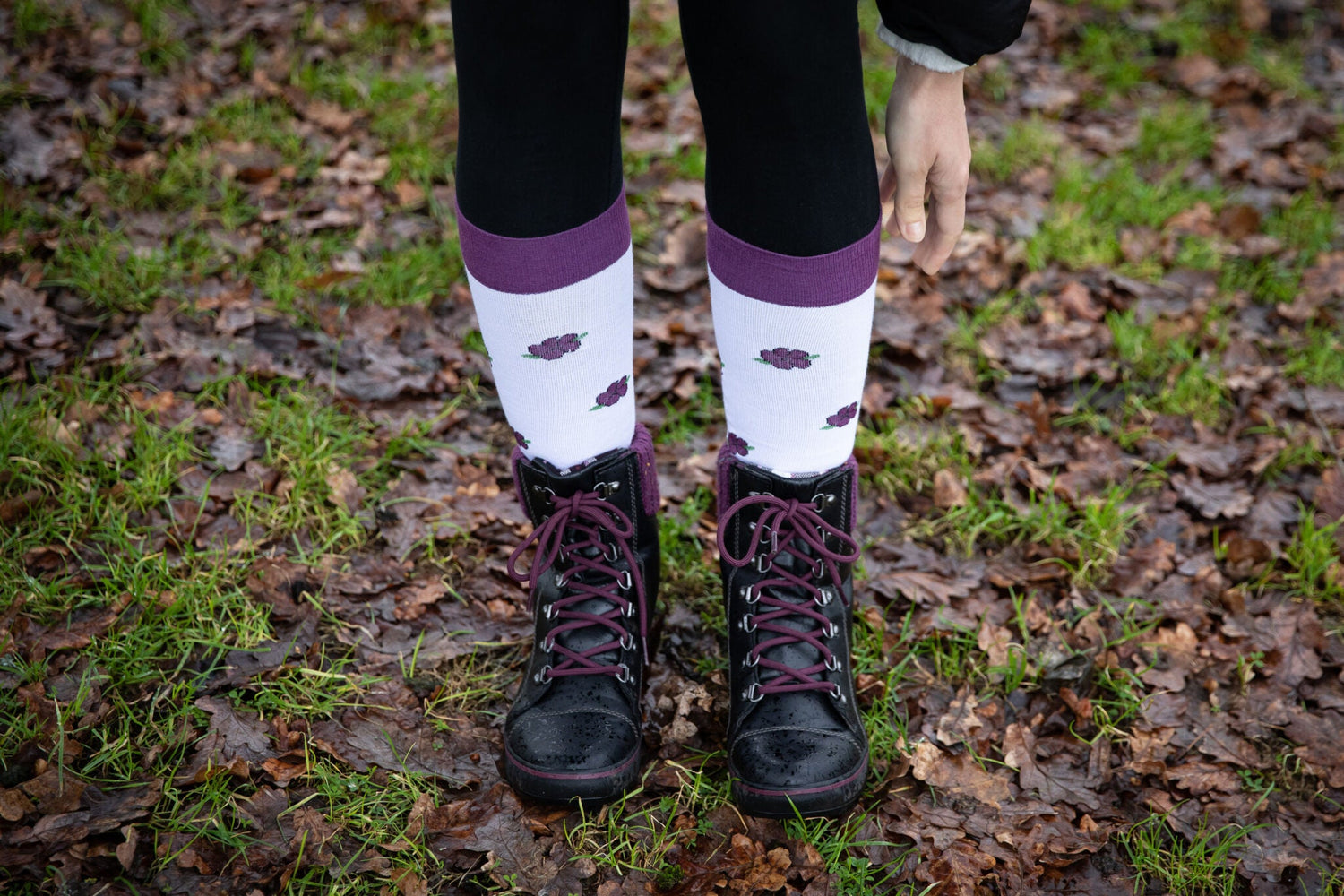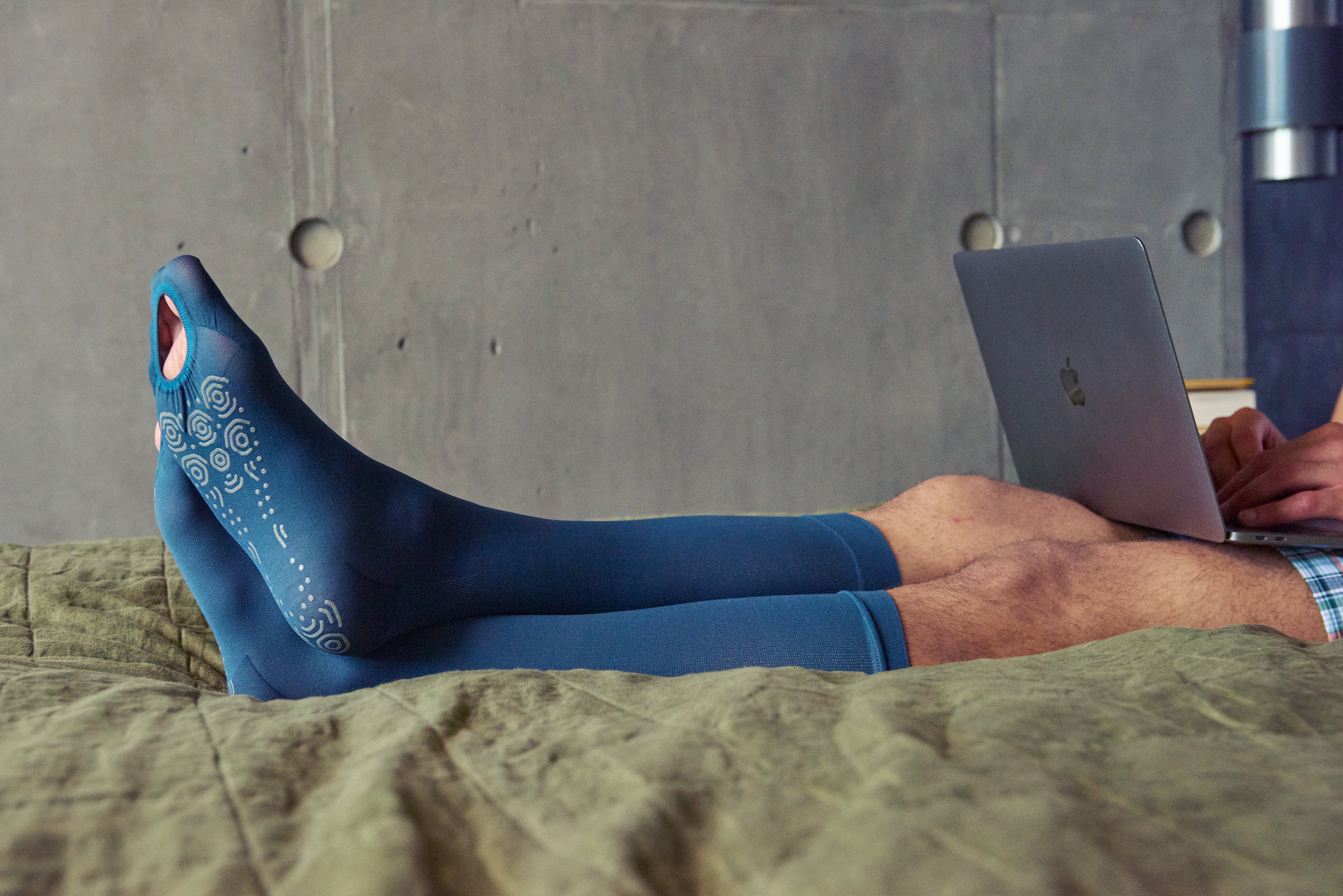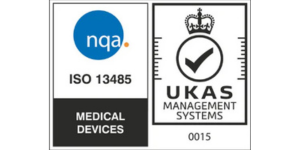Restless Legs Syndrome (RLS), also known as Willis-Ekbom disease, can severely impact the lives of those who suffer from it. People often report interrupted sleep and daytime fatigue, uncomfortable sensations, and an urge to move their legs, and sometimes involuntary leg movements.
But what can sufferers do to feel more comfortable and get their lives back? Alongside lifestyle changes and possible medications, can compression socks and stockings help RLS? Well, let’s find out.
What is Restless Legs Syndrome?
Restless legs syndrome is characterised by having a strong, almost irresistible urge to move the legs, which often gets worse at night or when resting. Many sufferers have uncomfortable feelings in their legs, such as itching, throbbing or tingling, which is what contributes to the urge to move. It’s sometimes also likened to the feeling of insects crawling on the skin, and in extreme cases, can even cause pain.
Despite the name, some people also experience the same feelings in their arms.
Those suffering from RLS can experience mood swings, fatigue, issues with concentration and memory, decreased productivity, and other mental health conditions like depression and anxiety.
What causes Restless Legs Syndrome?
The exact causes of RLS are unknown, but it is known to run in families, which suggests there may be genetic causes involved. According to the National Institute of Neurological Disorders and Stroke (NINDS), it may also be linked to low levels of iron in the brain or dysfunction in the basal ganglia, the part of the brain that controls movement. This uses dopamine to produce smooth, purposeful muscle activity and movement, and disruption of dopamine levels in the brain frequently results in involuntary movements.
Who can suffer from Restless Legs Syndrome?
Although anybody can suffer from RLS at any age, it commonly starts in middle age and is more common in women. What’s more, it can also occur with some other conditions, such as:
- End-stage renal disease and haemodialysis
- Neuropathy (nerve damage)
- Sleep deprivation and sleep conditions like sleep apnea
- Pregnancy, especially in the last trimester. In most cases, symptoms usually disappear after delivery.
- Excess use of alcohol, nicotine, and caffeine
- Anti-nausea and antipsychotic drugs, antidepressants that increase serotonin, and various antihistamines
How to Treat Restless Legs Syndrome
Treatment for RLS depends on the underlying cause. If it’s a result of another condition, treating that directly may be enough to reduce the symptoms. If they don’t help, your doctor may prescribe medication or refer you for further treatment by a specialist.
However, in many cases, there are lifestyle changes and things you can do yourself to help alleviate the symptoms. These include:
- Avoiding alcohol, nicotine, and caffeine
- Maintaining a regular sleep schedule
- Consistent exercise
- Warm baths
- Leg massages
- Hot and cold therapy via heat and ice packs
- Wearing compression socks
How do compression socks help Restless Legs Syndrome?
Wearing compression socks or stockings can help alleviate the sensations and discomfort associated with RLS and help people manage the symptoms, primarily through increasing the circulation in the legs. However, it’s essential to consult with your doctor beforehand to ensure that it’s safe, especially overnight.
Many people find that the sensation of compression alone on the skin can provide a distraction from the urge to move their legs. And for the same reason that compression garments can help soothe leg aches and pains, the socks themselves can provide some pain relief.
By soothing the symptoms of RLS, some people find that many other aspects of their lives improve, such as sleep and general wellbeing.
What compression level is right for RLS?
The right compression level can vary from person to person, and you should work with your doctor or another medical professional to find the right compression socks for you. However, many people choose to start with a light compression rating of between 14 and 17mmHg, such as that found in our Everyday Life range.
This should provide gentle compression that can be worn for longer periods of time, to see if you feel the benefits. After this, you may choose to experiment with higher compression, such as in our AES socks and stockings, although we recommend taking advice from a healthcare professional first.
FITLEGs Compression Socks for RLS
If you’re looking for a simple way to alleviate the discomfort of RLS and enhance your overall wellbeing, compression socks could make the difference.
At FITLEGs, we’ve designed our ranges with comfort and everyday wearability in mind, and our online shop has a variety of options to choose from. Visit our online store to find your perfect pair.






